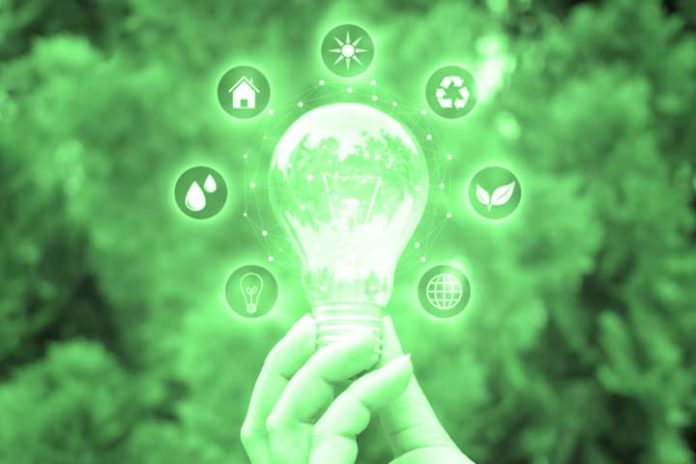Ecodesign has gained great relevance in recent years due to the growing concern for the environment and sustainability. The design of products and services with an eco-friendly approach has become a priority for many companies and designers to minimize the negative impact on the natural environment and promote responsible consumption.
In this article, we explore the concept of eco-design, its principles, benefits, and how it is applied in practice in favour of a more sustainable lifestyle.
What is eco-design, and what are its benefits?
Ecodesign, sustainable design, or green design is a design discipline that focuses on implementing environmental criteria in the production and development phases of products and services so that they are fully aware of and responsible for the environment and sustainability.
Some of the key principles of ecodesign include:
- Complete life cycle: Ecodesign considers the entire life cycle of a product or service, from its conception, design, production, distribution, use, and up to its final disposal. The aim is to minimize the negative impacts at each stage and maximize the efficiency and sustainability of the product in all its phases.
- Efficiency in the use of resources: It seeks to optimize the use of resources such as materials, energy, and natural resources in producing and using the product. This can include reducing virgin materials, using recycled or recyclable materials, choosing renewable energy sources, and minimizing overall resource consumption.
- Design for the circular economy: It seeks to design products to be repaired, reused, recycled, or composted at the end of their useful life, promoting the circular economy in which products have long life cycles and the generation of waste is avoided.
- Minimization of environmental impacts: It seeks to reduce the negative impacts of the product on the environment, such as the emission of greenhouse gases, air, water, and soil pollution, waste generation, and ecosystem degradation. This can be achieved by improving production processes, optimizing logistics and transportation, and choosing more sustainable materials and technologies.
- Functional and aesthetic design: Ecodesign seeks to create functional and attractive products for users, promoting durability and long-term use. It seeks to avoid planned obsolescence and unnecessary consumption, promoting a conscious and responsible consumption approach.
- Participation and collaboration: Ecodesign seeks to involve the active participation of different actors, such as designers, manufacturers, consumers, local communities, and other stakeholders. It promotes collaboration and dialogue between these actors to find sustainable solutions and continuously improve products and services.
These are some of the most important principles a company can follow when manufacturing green design products, which can vary or complement each other depending on the context and type of product or service. Green design is a great benefit for the environment.
Benefits of Ecodesign on the Environment
Ecodesign offers a series of benefits manifested in the environment as solutions to the harmful impact.
- Preservation of ecosystems: Through the optimization of finite natural resources, minimizing their depletion.
- Pollution reduction: Pollution is prevented by protecting the quality of air, water, and soil, reducing waste generation during all production phases.
- Carbon footprint reduction: Ecodesign seeks to reduce greenhouse gas emissions associated with product production, use, and disposal.
Apart from obvious environmental benefits, an advantage that green design products also offer is their quality, as they offer greater durability and performance. This also affects the reduction of waste generation. In addition, they are considered innovative products or services since they provide added value that makes them stand out from their competition.
Practical examples of ecodesign
We have searched for some particular examples of how to carry out a green design or eco-design in the production of products.
Sustainable labelling
Within the solutions for green design products, you can find many options in the labelling. Labels can be made from lighter materials, so they consume fewer resources to manufacture or labels from post-consumer waste materials such as apples or sugar cane.
Ethi-nor
ETI-NOR labels are a type of eco-label used in the European Union (EU) to certify products and services that meet specific ecological criteria in terms of their impact on the environment.
They aim to promote products and services with a lower environmental impact than conventional products. This promotion also promotes the research and development of more sustainable solutions, which can drive the adoption of more environmentally friendly technologies and practices.
The modular design of technological products
Many electronic devices, such as smartphones and computers, are designed modularly, allowing for easier disassembly and repair, extending their useful life, and reducing the need to replace the entire device in case of a single part failure.
Reusable packaging
Design durable and reusable bottles or containers instead of disposable containers to reduce waste generation.
Compact and lightweight design
Electronic devices designed in a compact and lightweight way use fewer materials in their manufacture and transport, which reduces the ecological footprint in terms of consumption of natural resources and emissions of greenhouse gases during their life cycle.
Non-toxic design
Ecodesign in the technology sector can include eliminating or reducing toxic substances in manufacturing electronic devices, such as lead, mercury, cadmium, and other hazardous materials, to minimize negative impacts on the environment and human health during the cycle of device life.
Energy efficiency
Design of products with features that reduce energy consumption during use, such as devices with energy-saving modes, energy-saving LED lighting, or appliances with energy management systems.
Efficient cultivation techniques
In production, it is interesting to opt for sustainable irrigation systems such as drip irrigation or the collection and use of rainwater to reduce the use of water. In addition, products with a lower water footprint can be chosen to reduce water consumption in textile production.

